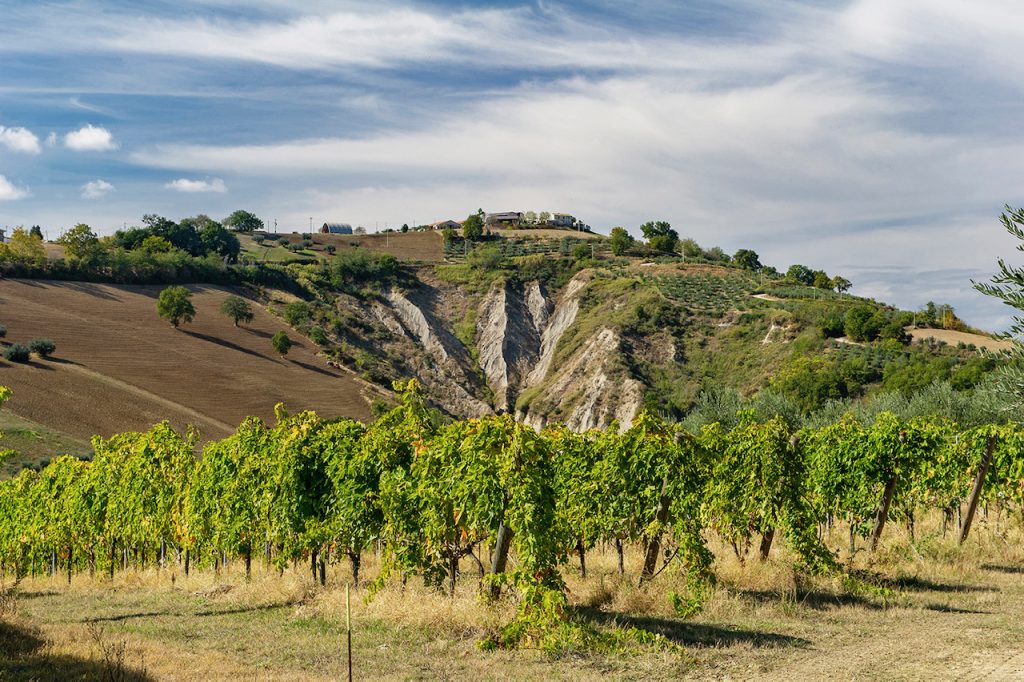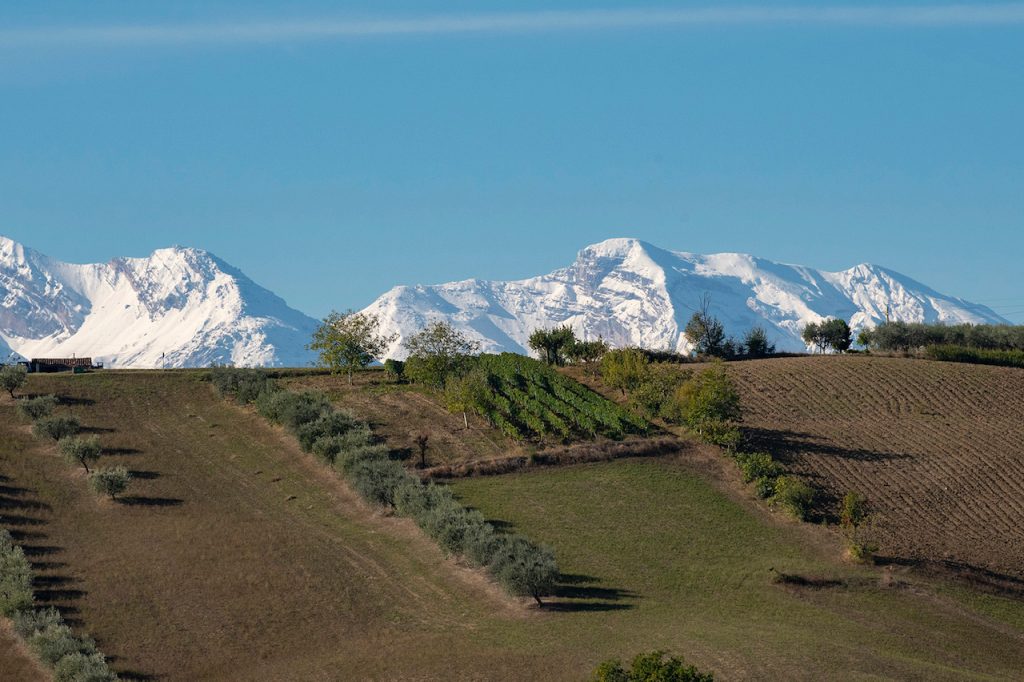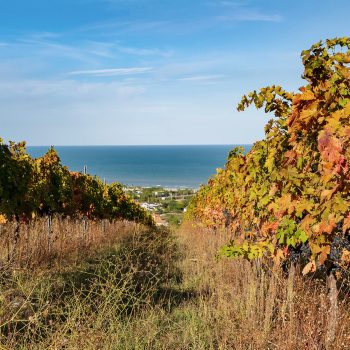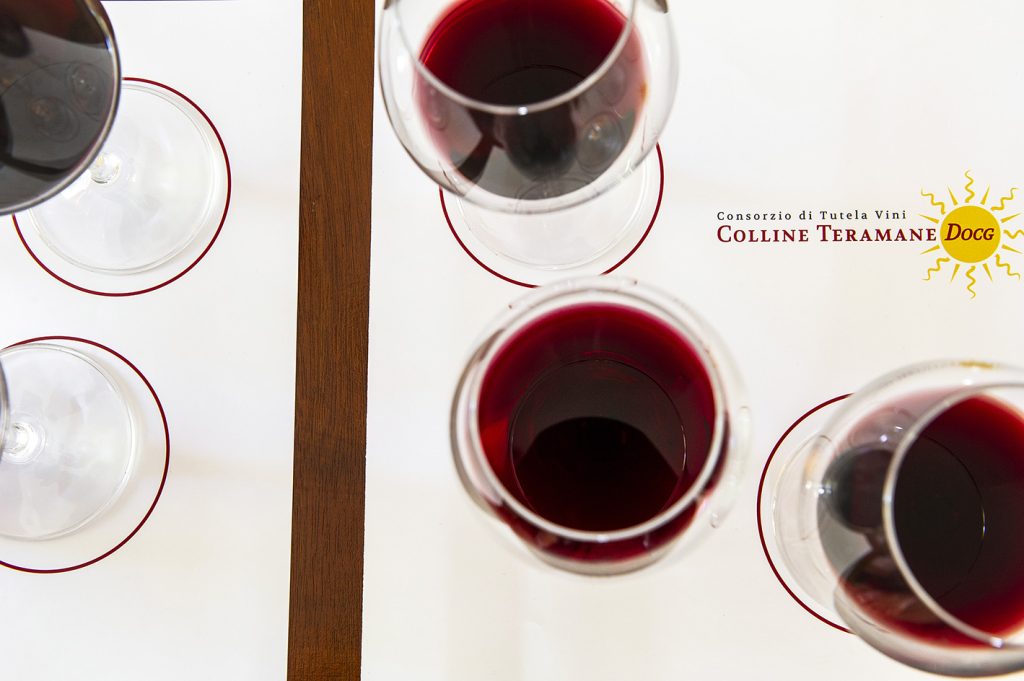This website uses cookies so that we can provide you with the best user experience possible. Cookie information is stored in your browser and performs functions such as recognising you when you return to our website and helping our team to understand which sections of the website you find most interesting and useful.
Is it time for Montepulciano from the Teramo hills to get the recognition its deserves?
Wines from Abruzzo have long been recognised by their producer rather than the appellation, but as the Consorzio di Tutela Vini Colline Teramane hits its 20th anniversary, this may be about to change, reports Filippo Bartolotta.

There are many great wines produced in Abruzzo, a region right between the Adriatic Sea and the massive mountains of the Apennines, grandiose mountains that well exceed 2,000 meters in height.
However too often the wines of this region have been known only thanks to name of the single most famous producers rather than to the territory where the wines are born. To recognise a great wine produced in Abruzzo, the name of the producer has always been first and that of the appellation, second.
There is one major denomination called Abruzzo DOC, which includes the whole region. And until recently there was no evocative story capable of catching consumers, press and trade attention.
The history of the Consorzio di Tutela Vini Colline Teramane was born with the idea to build an identity of an entire agricultural and productive community. Colline Teramane was not even a historically existing name. But a group of capable and far-sighted wine producers began to understand that a here Montepulciano had a character of its own. A wine with very intriguing characteristics of depth, aromatic complexity and an immediate and yet strong character.
The Montepulciano produced in the Teramo hills was the key to understanding a territorial diversity that needed to be told and promoted. Because historically Montepulciano produced in this area has always been a fine wine, of an average higher quality, a wine that has always commanded higher average prices than the rest of Abruzzo. And the producers of the area understood that this diversity had to be told and protected and therefore created an appellation that did not exist before.
In 2003 a group of founding wineries managed to get the DOCG for Montepulciano d’Abruzzo Colline Teramane – the first DOCG of the Abruzzo region- Today it can be produced in 33 municipalities entirely included in the province of Teramo. A place formerly suited to viticulture and historically dedicated to the vinification of its grapes. A unique and easily recognizable terroir, circumscribed between the Adriatic Sea and the mountain ranges of Gran Sasso and Monti della Laga, a habitat and a microclimate that ensure Montepulciano optimal conditions for maturation and great quality and typicality in the glass.

Today, with over 600,000 bottles produced, and a production that has doubled in the last two years alone, with a total of 172 hectares of vineyards, Montepulciano d’Abruzzo Colline Teramane has become an example of excellent quality and a strong identity. A wine capable of expressing and perfectly be the voice of the territory in which it is produced. Territory that embraces the entire coastal and inland hills of the province of Teramo. Characterised to the east by wide and sinuous hills that slide towards the Adriatic Sea and to the north-west by the imposing presence of the Gran Sasso and the Monti della Laga. The sea and mountain breezes that caress and clean the vineyards, together with the clay-silty nature of the soils made up of plio-plestocene deposits, the excellent rainfall and the considerable temperature variations between day and night favoured by the nearby mountains guarantee Montepulciano unique and optimal that translate into great terroir wines.
The Teramo hills are also characterised by a very particular hydrographic configuration, with four valleys bathed by as many rivers, Vomano, Tordino, Satinello and Vibrata which guarantee excellent humidity and biodiversity for the whole area.

Twenty years after the creation of the DOCG, the Consorzio di Tutela Vini Colline Teramane DOCG has decided to sum up and investigate the close link that has been created in this area between man, the environment and the Montepulciano grape, which has given life to unique and well recognizable wine, even if the production styles that are not yet totally homogeneous. The producers of the Teramo Hills still present very different styles and ideas of refinement, which means that there may be wines of different vintages on the market, ranging from 2021 to 2016. All this makes it harder to read this territory.
The production disciplinary is very stringent on yields, vine densities and types of farming, and above all on the sustainability front, with over 70% of the companies operating under a certified organic, integrated pest management or biodynamic quality regime. But in terms of refinements it leaves a lot of freedom to the producers. The ‘annata’ (the lowest and youngest wines from any given vintage) comes out the cellar a year after the harvest, while the Riserva must age for at least three years (including a minimum of one year in wooden barrels). Producers are very free to experiment with different possibilities of vinification and refinement that a versatile grape like Montepulciano offers them.
The result is on average very pleasing and of excellent average quality but the whole pictures is perhaps yet too uneven and not easy to read. The style of the wine makers makers varies a lot. There are those who seek spontaneity and integrity more declined towards fruit and drinkability or those who instead remain anchored to richer and more enveloping concentrations perhaps dedicated more to the international market. But in this lack of homogeneity there is still a clear organoleptic markers that Montepulciano from the Teramo hills manages to express punctually and clearly in the glass. An acidity and a dynamic energy with great savoury and ageing potential traits.
As mentioned earlier, the vintages tasted were many as well as the very different styles. Basically the 2021 and 2020 have given wines of great pleasure and drinkability that can only improve in the years to come. 2019 was a cold year here, with little rain and also characterised by summer hailstorms that didn’t help. 2018 and 2016 were years of great climatic balance which gave excellent wines and 2017 was quite hot and dry but which gave perhaps the best wines.
TASTING NOTES

1. Nicodemi le Murate Montepulciano d’Abruzzo Colline Teramane Docg 2021
Full colour of great density, dark and full even to the nose where it offers a nice fruity, dry herbs and iron. Very juicy palate with a full-bodied and vibrant like plums and dark cherries. Delicate and well integrated tannins
2. Terraviva Estate, Terraviva Montepulciano d’Abruzzo Colline Teramane Docg 2021
On the nose it opens releasing hints of humus, some very earthy tones and red fruit. The palate has a great acidity, refreshing and very pleasant with a juniper, blood orange and pleasant bitter finish with firm tannins
3. Bossanova, the Bossa Montepulciano d’Abruzzo Colline Teramane Docg 2020
A very full and bright colour. The nose is sweet with very juicy fruit, with touches of carob, incense, brambles and humus. On the palate everything plays out with refreshing tones, crunchiness and a pleasant almost citrine acidity. A perfect tannic touch and a lingering elegant finish.
4. Cerulli Spinozzi, Gruè 2020
A very shiny and sexy colour. The nose is fresh thanks to a decisive balsamic breath, very clean and elegant with little extract and more elegance. Even in the mouth there is always the finesse that marks and defines it, with a beautiful salty length on the finish. The tannins are firm but not impetuous and the sip is truly surprising thanks to the beautiful citrus on the finish
5. San Lorenzo, Oinos Montepulciano d’Abruzzo Colline Teramane Docg 2019
The nose shows bramble berries, blackberries, woods and undergrowth then opens towards a more mature fruit character that continues its show even on the palate where the sip is full but flows agile and dynamic. A full-bodied wine with roasted almonds and a great smoky touch on the very long finish.
6. Montori, Fonte Cupa Montepulciano d’Abruzzo Colline Teramane Docg 2019
An aromatic nose typical of the variety: blackberry and small berries, notes of earth and humus and a beautiful ferrous minerality. On the palate it has great suppleness, agility and a lot of elegance where the notes of ripe fruit comes back. It is a wine that begins its full expressiveness now but it will last for many years.
7. Lepore, Re Montepulciano d’Abruzzo Colline Teramane Docg 2018
Nose of rhubarb and medicinal herbs. The mouth is a progression of aromatic, balsamic and mineral freshness. Great structure and excellent drinkability at once.
8. Monti, Voluptas Montepulciano d’Abruzzo Colline Teramane Docg 2017
The fruit is crunchy, refreshing and clean. It has a gentle, salty and very well balanced structure with a delicate but very vital lean finish. This is a wine where lees is more. Nice.
9. Mazzarosa, Mazzarosa Montepulciano d’Abruzzo Colline Teramane Docg 2007.
Bright and sensual colour. The nose is spicy and balsamic with medicinal herbs, cinchona and rhubarb, with a touch of incense. Very savory palate with a long balsamic final wave that makes the sip satisfying and very voluptuous.
10. Faraone, Santa Maria dell’Arco Montepulciano d’Abruzzo Colline Teramane Docg 2016
A wine that makes us understand how the Montepulciano of the Teramo hills has a serious aging potential. It still keeps the currant and blueberry fruit intact and crunchy, with balsamic and woody touches. The palate shows mature expressive fullness, complex and austere but very lively and vibrant with an acidity that dances around the mature and very pleasant tannins.

